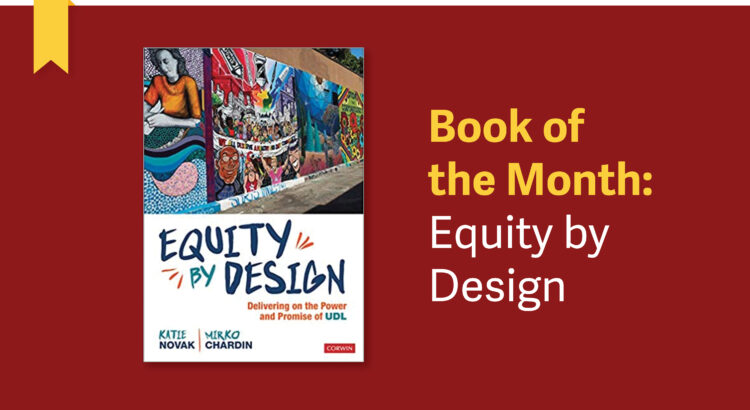Equity by Design: Delivering on the Power and Promise of UDL (2020)
By Mirko Chardin and Katie Novak. Thousand Oaks.
Equity by Design: Delivering on the Power and Promise of UDL is a terrific handbook for those looking to integrate Universal Design for Learning (UDL) practices into their teaching, and for those wanting to build on their existing practices.
It starts by connecting UDL and social justice, with concreate examples and strategies. Equity by Design helps us define social justice in our specific context(s) and then provides an equity audit to help us realistically understand what groups are being marginalized in our classrooms, and how our own beliefs and actions contribute. And it doesn’t leave us there; it moves us through the next steps, always providing specific examples and stories along the way.
As Mirko and Novak point out:
“Challenging your own belief system and asking colleagues to do the same is difficult, and at the same time is both rewarding and necessary. Because when beliefs are challenged, they lead to action. As you begin or continue your journey, consider the following next steps.
- Discuss what [your definition of social justice looks] like in action. How will you ensure that you and your colleagues will be held accountable… What does it look like to be held accountable? What can students hold you accountable to and how?
- Tell other colleagues and school leaders about what you’re doing, explicitly focusing on the commitments that you are making.”1
A Practical Resource
Equity by Design introduces us to the idea of personalized learning for equity, which sounds both wonderful, and difficult to implement. But the authors lead us through a detailed and practical seven-step process that helps us understand what motivates and concerns our students, ourselves and our communities, and then begin to reflect, interpret and brainstorm solutions and responses. This book encourages us to iterate – don’t worry about getting it perfect the first time; just adopt a mindset and practice of continuous improvement.
Along the way we hear true stories from real-life teachers and students. The book continues with discussions – and more practical examples and strategies – of identity, cultural responsiveness, funds of knowledge, and restorative justice.
Equity by Design includes a valuable UDL Progression Rubric to help us assess where we provide in-class activity and curriculum planning options for the following (on a scale of Emerging, Proficient, and Progressing Toward Expert Practice):
- Recruiting interest
- Sustaining effort and persistence
- Self-regulation
- Perception
- Language, mathematical expressions and symbols,
- Comprehension
- Physical action
- Expression and communication
- Executive functions
This book helps us take a balanced and honest look at ourselves. Its real-life examples and anecdotes provide clarity, reduce shame, and support us as we build towards inclusive, learner-centric teaching and learning practices.
– Lucinda Atwood
If you would like to borrow a hard copy of this book or host a book club, please email tcdc@langara.ca. It’s also available as an ebook through Langara Library.

